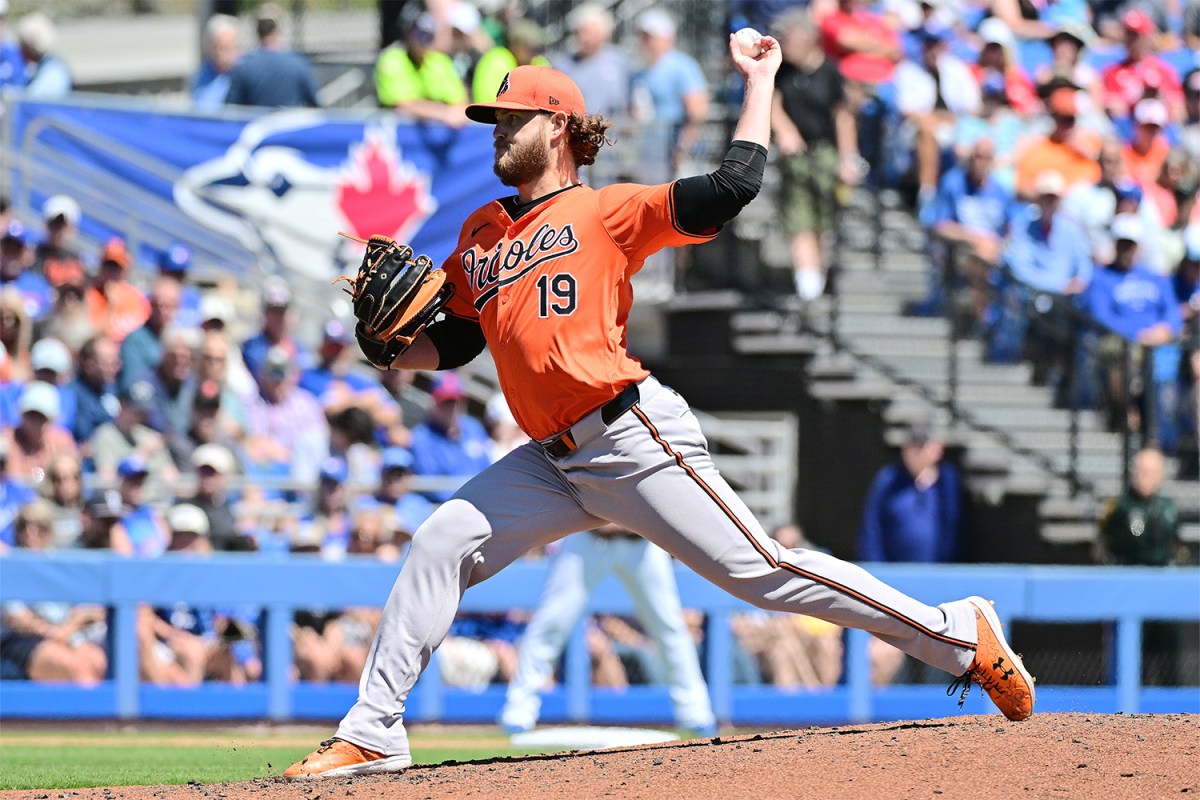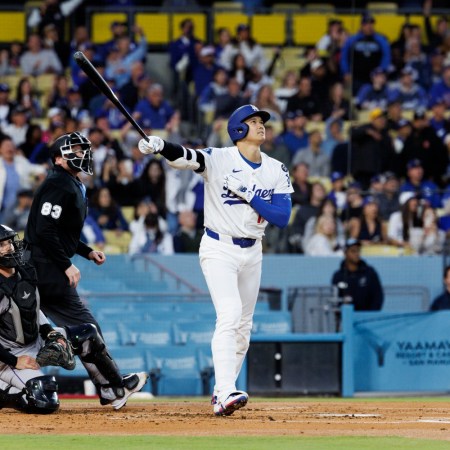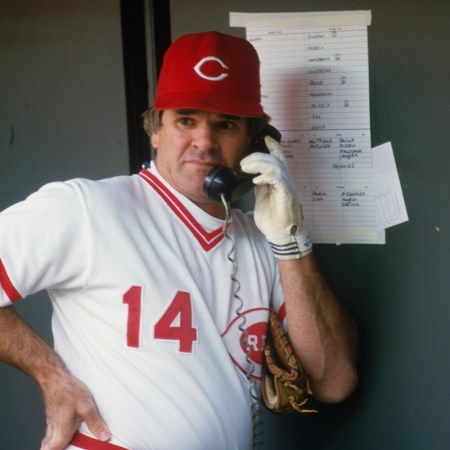If you think the success of the Baltimore Orioles last year was a fluke, time will certainly tell. But lefty pitcher Cole Irvin is at least one player on the roster putting tremendous effort into bettering his performance this season and, hopefully, in turn, the team’s outcomes.
Irvin stood for a seven-minute interview in spring training and broke down his painstaking processes for pitch development and enhancement. The 30-year-old said he added a cutter to his repertoire this past offseason, which he’ll use to pound the inside of the strike zone against right-handed hitters. And though Irvin already boasted a sinker, he said he improved upon it over the winter to give him a sharper low-and-away tool that will help him get those same righties out. He beefed up his sinker’s effectiveness with the aid of a trendy new pitcher performance metric: seam-shifted wake break.
Irvin explained that when executing a sinker in the past, he held the ball with his index and middle fingers touching the two seams “between the railroad tracks” — the portion of the ball where the seams are closest to meeting.
“Now I throw a seam-shifted, two-seam sinker,” Irvin said. Demonstrating his grip change in the interview, he showed how his sinker-throwing fingers now cross the seams at an angle. His index finger, positioned across the seam closer to his wrist, applies pressure to the ball, while his middle finger slightly touches the far seam. The new grip is generating more movement in the pitch, he said, especially as the ball nears the catcher’s mitt, compared to what the sinker did for him last year. He even knows precisely how much movement.
“I was getting about 14 to 16 inches of horizontal movement on my old sinker; now I’m getting upwards of 18 to 20, which is significantly more than I’m used to,” Irvin told the nodding interviewer. Like any other hardcore admirers of baseball, they know that such meager measurements in the game mean life and death — or, rather, hits and outs.
Mike Petriello has made a living analyzing baseball’s inches, and even smaller dimensions, as a writer for Major League Baseball’s data-focused digital publication Baseball Savant. Posting the Irvin interview to social media, Petriello highlighted in his caption that the pitcher was utilizing the seam-shifted wake (SSW) metric. He added: “Pitchers are just nerds now.”
“It’s cool that all this data and information that, 10 years ago, maybe you’d have been laughed out of a clubhouse for talking about, now guys are like, ‘Oh, I can just use this to get better. It’s a training tool for me,’” Petriello tells InsideHook. “I find that really interesting.”
SSW is just one of the cutting-edge metrics MLB players and coaches are leveraging to improve on-field performance. Though MLB teams tend not to broadcast how they collect and use data to maintain potential competitive advantages, it’s a near certainty that Irvin received his SSW break numbers from a new device built and distributed by the sports tech company Rapsodo. The group’s Pro 3.0 is a first-of-its-kind machine with camera and radar technology that tracks ball flight in both pitching and hitting scenarios.
According to John Garrett, a Rapsodo analytics engineer, an increasing number of MLB players and coaches are employing the Pro 3.0, which was first previewed in spring training of 2022. Seam orientation is another specialty pitching metric the Pro 3.0 produces, Garrett says, while hitting-focused folk are looking closely at metrics such as bat-path tracking — which is currently provided by other devices — and ball spin direction.
What Is Seam Orientation and Seam-Shifted Wake Break?
A few years ago, Garrett was a graduate student at Utah State University, studying mechanical engineering. His thesis report focused on seam-shifted wake break, and after joining Rapsodo just after the Pro 3.0 was manufactured, he further developed the metric as measured by the device.
SSW break essentially estimates how far a pitch moves as it travels to the plate, taking into account atmospheric properties, including air density and viscosity, elevation, temperature, barometric pressure and relative humidity. Pitch velocity, spin rate, seam height and other factors are also considered, but according to Garrett, one of the most vital aspects of pitch execution that influences its break is seam orientation: where the seams spin on an axis after it’s thrown, which is determined by the ball’s placement in a pitcher’s hand and how it is released.
“Historically, based on our understanding of the physics of ball flight, to have elite movement, pitchers needed to have elite velocity and elite spin rates,” Garrett observes. The research he and other collaborators did at Utah State, however, showed that pitchers could still have high rates of movement in their pitches without equally impressive velocity and spin rates.
Seth Davis Shares His March Madness Wellness Routine
The broadcaster talks long flights, quick lifts and the power of meditationOne such pitcher Garrett cites is Kyle Hendricks, who won both a National League ERA title and a World Series with the Chicago Cubs in 2016. Hendricks did so, Garrett says, by tossing pitches that moved dramatically in place of an ability to throw as hard as many of his MLB contemporaries. He executed such movement with tactful ball gripping and release techniques.
Seam orientation and SSW break data fills in some blanks on what goes on after the ball is tossed and before it hits the catcher’s mitt.
“The more we understand about the physics of ball flight, the more we know what we need to pay attention to,” Garrett says on behalf of pitchers. “With something like seam-shifted wake [break], it’s pretty finicky in that if the seams are oriented in such a way, it can create this effect, but if it is just slightly off, then you won’t get it. So if you’re not aware that you need to really pay attention to that, then you could lose movement on your pitches, and you won’t understand why.”
To put it another way, pitchers can use seam orientation and SSW break data to retain a better feel for their pitches and create a mental bookmark of what they need to repeat in their performance to generate success.
Further, Garrett says a pitcher’s understanding of SSW break will help them deliver balls to the plate that spin similarly, but move differently, confusing hitters who have 0.125 seconds to decide whether or not they should swing and where to place their bats.
Which brings us to…
Bat-Path Tracking
Rapsodo’s Pro 3.0 device provides crucial hitting-focused data, including exit velocity and launch angle, both of which have been scrutinized by players, coaches and other on-field performance evaluators for some time now. When asked for a hitting metric that’s catching on these days, Garrett volunteers one currently not offered by Rapsodo, but is nonetheless exciting to him: bat-path tracking.
Tony Gwynn studied his swings on videotape around 40 years ago to help him better understand what he needed to replicate at the plate each day to sustain quality performance — which he did on his way to Cooperstown. In a sense, MLB players of today are leveraging the same type of data from a similar type of source, but it’s all just really souped up and quantified by contemporary technology, in this case the Hawk-Eye system.
Launched in all 30 MLB ballparks back in 2020, the Hawk-Eye system is a series of high-resolution and high frame-rate video cameras that track ball and player movement. Since its introduction, Hawk-Eye has been used to measure bat speed and hard-hit rate, but Garrett likes to look at bat-path data because it has a direct impact on ball spin, which in turn plays a large role in the ball’s flight distance.
“Where bat [path] tracking becomes very valuable is, you’re able to do things like pair up the path of the bat with the trajectory of the pitch,” Garrett says, this time on behalf of hitters, “and determine: were you on the same plane as the incoming pitch?”
Hitters look to generate backspin because it helps the ball travel higher and farther through the atmosphere, whereas topspin pushes the ball toward the ground. Backspin is achieved when hitters strike the lower half of the ball, so the bat’s pathway toward that point is critical.
Spin Rate and Spin Direction
Per Rapsodo research, a back-spinning baseball traveling between 1,500 and 3,500 RPMs will cover longer distances than those moving at different RPM rates and with other types of spin direction. Balls traveling at lower spin rates can still have substantial zip if struck hard enough, but they won’t travel at optimal distances because the ball isn’t deflecting the air in its path as much, creating the Magnus effect. And if there’s too much spin, that signals a “mishit,” meaning the hitter didn’t square up the ball enough to create the velocity that’s also needed for long-distance shots.
Hitters want to avoid rifle spin, named as such because the baseball is spinning like a bullet shot out of a gun. The downward pull of gravity aside, essentially it moves straight, and if the ball isn’t going to go out of the park, a hitter at least wants to try and make a fielder move around a bit while attempting a catch.
There’s also sidespin, which doesn’t help home-run hitters much compared to backspin because it doesn’t aid in lifting the ball. But sidespin has its advantages in other hitting situations. While too much sidespin will probably put the ball in the stands — the ones in foul territory, not the others past the outfield fence — an amiable combination of backspin and sidespin will add to the hook or fade of line drives, helping them find gaps in the outfield.

A graph depicting the potential distance of a baseball traveling 100 mph and hit at a 30-degree launch angle when different spin rates are introduced. Courtesy Rapsodo
Topspin may also be bad for home-run hitters, but it’s great for Luis Arráez of the Miami Marlins, who’s won two straight batting titles, one in the American League and one in the National League.
“Topspin for a guy like Luis Arráez is what he’s going to try to live off of,” says Scott Bush, CEO of the Society for American Baseball Research (SABR). Per Bush, a non-home-run hitter like Arráez thinks, “I want to hit line drives, I want to put the ball in front of the outfielders, and that means the ball has to get down.”
As on the pitching side of things, calculated spin rates and spin directions of batted balls — supplied by devices like Rapsodo’s Pro 3.0 and others — help hitters understand what their bodies did to generate success. Fans can get in on the act, too, by reading Baseball Savant, which Petriello says will soon be publishing bat-tracking metrics with the help of Statcast and the Hawk-Eye system.
Too Much of a Good Thing?
There are plenty of people around baseball who believe data is “ruining” the game, in part because there are certain elements of the sport that can’t be measured and numbers remove room for instinct. But if metrics like these were completely hurting the performance of players who earn millions of dollars, compensated by owners who rake in billions, no one would lean into them. Like when a hitter knocks a ball out of the park or a pitcher dizzies an adversary with a breaking pitch, there’s a sweet spot.
“I’m not saying that the information is bad, but [it’s] just like chocolate-chip cookies, which in my opinion are not bad for you, but if you consume way too many of them and that’s a three-course meal for you, it ends up being bad for you in the long run,” says Kevin Wilson, a former pro turned hitting consultant who’s worked with MLB players in that role over the past 24 years. Like a good diet, his approach to data integration during training is one steeped in moderation, with the leveraging of metrics that players can digest and apply to their trade coming alongside more traditional “wisdom” — something he worries is becoming increasingly scarce in the game.
“Players don’t talk to each other anymore; guys get kicked out of the game at 30 years old now,” Wilson says. “It’s not like it was 15, 20 years ago, where you would have a 40-year-old — you would have not just one, you might have three; AAA would be a bunch of late-30s to early-40s guys hanging on as well, and getting paid decent money, but also providing wisdom, having a beer after the game, talking about the game.”
When it comes to hitting, Wilson feels that “90% of those metrics” that most MLB teams use to inform players can be removed from their studies, “and guys will be clear,” he says. He’d rather hitters focus more intently on two data points about the pitchers they face: how hard they throw, so they can time the pitchers’ fastballs, and what their “out” pitch is, which helps hitters with their approach against a particular pitcher, as they better predict pitch sequences.
Technology and the data that comes with it, Wilson concedes, helps in that it all “verifies what we’re seeing,” but players and coaches should not get “lost in the weeds” of deep information caches either, he says.
John Garrett from Rapsodo might tend to agree with most of Wilson’s stance.
“This is a tool,” Garrett says of his company’s Pro 3.0. “Tech isn’t trying to replace coaches; coaches are definitely needed because coaches make the adjustments. Tech is a tool to help coaches maybe make more informed adjustments and be able to track the progress as a result.”
“So much of baseball is this interplay between science and art,” says Scott Bush, the SABR CEO. “There’s a science behind it and you do certain things [based on the science], but the art is the feel and the understanding of what’s going on inside of that hitter-batter matchup. And from a pitching perspective, the art component here is just like, ‘Well, I hold the ball a certain way, because it feels right to me,’ or ‘I release it this way, because that’s what feels right.’ And then you dig into that a little bit more, and you start to discover [that] this pitcher is really great at generating a Magnus effect, and the result of that is that his changeup moves this much more than it would if he released it slightly differently, or if he held it slightly differently.”
Perhaps Cole Irvin’s strikeout numbers on low-and-away sinkers in 2024, or bat-tracking metrics for hitters against his new cutter, will settle this debate on how much data is too much data once and for all. But probably not.
The Charge will help you move better, think clearer and stay in the game longer. Subscribe to our wellness newsletter today.

























